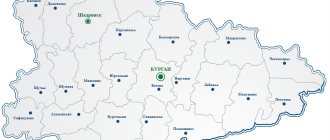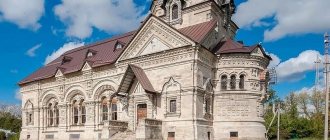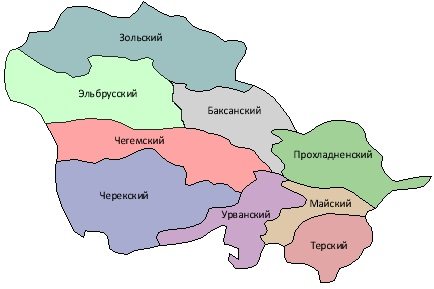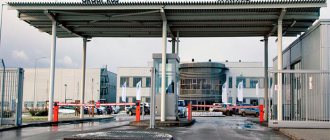Primorsky Krai is located in the south of the Far East. This region is located on the border with China and North Korea. Use a satellite map of Primorsky Krai to view its location, settlements, roads and other objects. Move around the area by zooming in and find out where the main train stations and airports are in the region.
The northern part of Primorye borders on the Khabarovsk Territory. These 2 regions are connected by road, rail and air. And in the south and east, as can be seen on the map of the Primorsky Territory with diagrams, its territory is washed by the Sea of Japan. The coastal zone is dotted with a large number of small bays, including the following:
- Ussuri;
- East;
- Shooter;
- Posyet;
- Amursky.
The coastal area is mountainous. The cities and towns that the map of Primorsky Krai with districts displays are located in the lowlands. Primorye includes several large islands:
- Popov;
- Russian;
- Askold;
- Reinecke;
- Putyatina.
Of the water bodies, the largest ones can be especially highlighted - Lake Khanka and the Ussuri River. On the banks of these reservoirs there are many tourist centers, fishing and hunting.
Districts on the map of Primorsky Krai
Primorye is divided into 22 districts, 4 of which are included in the Far North zone:
- Terneysky;
- Dalnegorsky;
- Olginsky;
- Kavalerovsky.
These areas on the map of Primorsky Krai are characterized by the least developed infrastructure, a small number of settlements and difficult living conditions. There are almost no economic facilities or industrial enterprises here, and trade is poorly developed.
There are numerous hunting grounds in the region. In Chuguevskaya and Terneysky there is hunting for wapiti and elk, and in Lazovsky and Pozharsky there are wild boars and bears. On a detailed map of the Primorsky Territory you can find suitable places for active recreation, hunting and ecotourism. Also in the region is Lake Elma with a large supply of mineral springs and healing mud.
The largest districts in Primorye:
- Spassky;
- Krasnoarmeysky;
- Terneysky.
The railway runs along the western border of the region. From here the Trans-Siberian railway runs to Moscow. In the northern regions, transport links are poorly developed. A detailed road map of the Primorsky Territory shows that the main highways pass through the southern and western regions.
Near Vladivostok there is the Knevichi International Airport. There are also several major ports in the region, whose main activities are related to fishing and container cargo transportation.
Notes
- Headquarters Order No. 11128 of September 10, 1945.
- ^ a b
Holm, Michael.
"Primorsky Military District". www.ww2.dk.
_ Retrieved 2016-03-20. - Feskov et al., 2013, p. 576–577.
- "PRIMORSKY MILITARY DISTRICT" [Primorsky Military District]. encyclopedia.mil.ru
(in Russian). Retrieved 2016-03-20. - Holm, Michael. "3rd Panzer Division". www.ww2.dk.
_ Retrieved 2016-03-20. - 7th Mechanized Division, renamed World War II 7th Mechanized Corps, appears to have been at Port Arthur but moved in 1955 to Voroshilov. Disbanded on April 12, 1957 V.I. Feskov et al., 2013, Table 5.2.1, pp. 204-5.
- Holm, Michael (2015). "54th Air Force". Soviet Armed Forces 1945–91
. www.ww2.dk. Retrieved 2016-04-29.
Map of Primorsky Krai with cities and villages
There are 29 cities and 116 villages in Primorye. The most significant city in the region is Vladivostok. It is a large industrial, port and economic center of the region. The population of the regional capital is more than 600 thousand people. If you use a map of the Primorsky Territory with settlements, then on it you can find all the objects of Vladivostok, look at its streets, find train stations and the airport.
The second most important city is Ussuriysk. The largest cities in the region are connected by the A-184 highway. North of Ussuriysk on the border with China is the main attraction of Primorye - Lake Khanka. This is a clean fresh lake, which is home to a huge number of fish. There are several small settlements located here, which can be seen on a map of the Primorsky Territory with villages:
- Mayskoe;
- Novonikolaevka;
- Trinity;
- Astrakhan.
In these villages there are main recreation and fishing centers. Fishing here is carried out all year round.
Another “calling card” of the region is the 6-lane road bridge across the bay, which connects the districts of Vladivostok, and its length is almost 1.5 km. You can find the bridge on a map of Primorsky Krai with cities and villages. In the evening, tourists and city residents love to stroll along it. Numerous lights and bright illumination make it a very romantic place.
Primorsky Krai
Primorsky Krai is a subject of the Russian Federation, part of the Far Eastern Federal District and located in its southern part. Sometimes called Primorye. In the south and east it is washed by the Sea of Japan and borders the Khabarovsk Territory, China and North Korea. The total area of the territory is 165,900 km2. The population of the region, as of 2022, is 1,895,305 people. The center of Primorsky Krai is the city of Vladivostok.
The climate is temperate monsoon. There are 6 nature reserves in the region: Dalnevostochny, Kedrovaya Pad, Lazovsky Reserve, Ussuriysky, Sikhote-Alinsky and Khankaysky. In addition, there are 13 wildlife sanctuaries, four national parks and a nature park. The region belongs to the East Asian floristic region. Among the flora and fauna there are many endemic and Red Book species.
Rail and sea transportation play a major role in the economy. A developed network of airports. A number of large and unique deposits of various minerals have been discovered in the region, on the basis of which the most powerful mining industry in the Far East has been created and operates. Primorye also has serious foreign economic relations. The largest ones are carried out with Japan, China, and the Republic of Korea. Relations with the USA, Taiwan, Thailand, and Singapore are developing. In addition, there are about 20 universities and branches of universities in the region. The largest is the Far Eastern Federal University.
On March 10, 2022, Arsenyevskaya Aviation launched a pilot batch of six Ka-62 helicopters. Moreover, two of them are intended for transportation within the Primorsky Territory. The samples undergo a certification testing program, which is carried out by specialists from Kamov JSC on the basis of the flight test complex of the National Helicopter Manufacturing Center and on the territory of the manufacturer. Active preparations are also underway for the start of production of the first serial rotorcraft.
On February 22, 1995, the Coat of Arms and Flag of the Primorsky Territory were adopted. The coat of arms is a green shield which includes an azure St. Andrew's cross. At the bottom there is a walking golden tiger on top of the cross. The flag is a rectangular panel, divided diagonally by a white stripe and consisting of two triangles: the upper one, located at the hoist, is red and the lower one is blue. In the upper corner of the shaft there is a golden image of a walking Ussuri tiger. The colors of the flag are the same as the flag of the Russian Federation, which symbolizes the unity of the Primorsky Territory and Russia.
On October 20, 1938, by the decree of the Presidium of the Supreme Soviet of the Soviet Union “On the division of the Far Eastern Territory into Khabarovsk and Primorsky Territories,” Primorsky Territory was formed. It included the Primorskaya and Ussuriysk regions of the Far Eastern Territory, which were later abolished. The administrative center of the region became the city of Vladivostok.
On May 26, 1936, by a resolution of the Council of Labor and Defense of the USSR, the construction of aircraft repair plant No. 116 began in the village of Semyonovka, Primorsky Territory. The former brigade commander of the Red Army, holder of the Order of the Red Banner, Vladimir Grigorievich Iryanov, was appointed head of construction and first director of the plant. The new enterprise is located 150 kilometers from Ussuriysk and 250 kilometers from the capital of the region, Vladivostok.
On October 25, 1922, Primorye was liberated from the interventionists. Units of the People's Revolutionary Army of the Far Eastern Republic entered Vladivostok, putting an end to almost five years of intervention and the fratricidal civil war in the Far East.
Economy and industry of Primorsky Krai
Thanks to its natural resources, location on the border of neighboring developed countries, as well as a large number of plants and factories, Primorye is a large industrial region. The regional economy is represented by such industries as:
- metallurgy;
- mechanical engineering;
- mining;
- energy;
- tourism;
- international trade.
Millions of tons of cargo are shipped annually from the ports of the region, which can be found on Yandex maps of the Primorsky Territory. Fishing makes a significant contribution to the economy of Primorye. Enterprises in the region also produce spare parts for cars, food, electricity and heat. Gold, diamonds and other rare minerals are mined in the region.
Tourism is of great importance for the region. Primorye has the largest reserves and hunting grounds. Tourists are offered river rafting, visiting natural and archaeological monuments, and hunting wild animals and waterfowl. Big cities welcome those arriving in the region with modern, comfortable hotels. Also in small settlements there are recreation centers for those who love active tourism.
Climatic conditions
The coastal climate is moderate monsoon, the territory is dominated by humidity and strong winds, changing direction twice a year. In winter, the region is covered by the Asian High with little precipitation, severe frosts and minimal snow cover.
Northwest winds bring January temperatures down to –32 °C. Summer is characterized by high clouds, prolonged fog and heavy rains. The area receives up to 900 mm of precipitation per year. The first months are cool with temperatures up to 15 °C, more reminiscent of spring. The warmest is August with an average temperature of 20 °C. Primorye is where the strength of the south wind is twice as strong as the north. The best time of year here is autumn, and there are more clear days in winter than in summer.
Tourist opportunities
Despite such a huge remoteness, Primorye does not require an advertising description. Its famous riches of the Ussuri taiga are unique and immense. This is a treasure trove for hunting enthusiasts. The routes cover a variety of lands, and there are also extreme trails.
The beauty of the sea coast of the region is simply mesmerizing - it has sandy beaches, rugged shores, numerous bays and wide bays. Tourists are attracted to the emerald islands, ports, protected areas and recreation centers.
How to get to Primorye?
To get to the region of the Far Eastern hills, a tourist from Moscow to Vladivostok will have to travel 9259 km by rail and spend more than 6 days on the trip. Of course, such a long distance is covered by a branded train with comfortable conditions for passengers. You can speed up your travel time by taking a plane flight from the capital, spending a little more than 8 hours of flight time.
From St. Petersburg it is also easy to get to Primorye. Where this can be seen from the flight schedule in this direction. Direct flights are operated by Ural Airlines, and with a transfer in Moscow or Novosibirsk they are carried out.
Population of the region
The remoteness from the Central regions and the proximity to foreign countries influenced the diversity of the national composition of the population in Primorye, where this is recorded in the statistical data of the region. In terms of population, the territory is dominated by 11 nationalities. The troika is led by Russians; about 2 million people live in their territory. Silver belongs to representatives of the Ukrainian diaspora - more than 90 thousand people, and bronze belongs to Koreans - there are 17 thousand people. In addition to these representatives, Tatars, Belarusians, Chinese, Chuvash and other nationalities live in the territory where Primorye of the Far East is located.
At the end of the 20th century, immigration flows poured into the territory of the region from neighboring and nearby states. Today on the streets of Vladivostok, Nakhodka or Ussuriysk you can meet representatives of China, Vietnam or North Korea. The main occupations for immigrants from these countries were construction, trade and study.
The average life expectancy for women is much higher than for men and is 71.7 years, and for the stronger half - 59.8 years. The region's population is rapidly aging, which leads to a process of depopulation.
The working population is 70.1%, and the unemployment rate reaches 6%. According to 2022 statistics, out of 1,923,116 people living in the region, 921,063 are male, and 1,002,053 are female. Most of the population lives in cities and amounts to about 1,500,000 people. A third of the population lives in rural areas.










